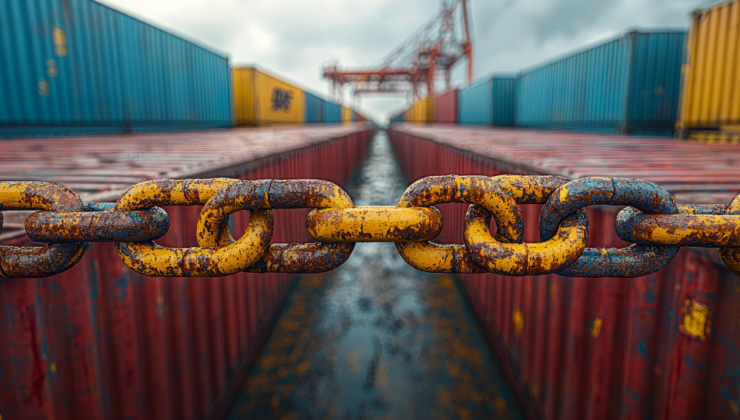

The introduction of new tariffs by U.S. President Donald Trump has prompted North American insurance companies to prepare for potential impacts on their operations. Insurance associations in both the United States and Canada are forecasting that increased costs could result in higher insurance rates for consumers.
The Insurance Bureau of Canada (IBC) commented on the situation in a statement to Insurance Business, noting that tariffs will likely elevate the expenses associated with repairing and replacing homes, vehicles, and businesses. “Although the full extent of these effects is not yet clear, tariffs are expected to negatively impact consumers and families on both sides of the border over time,” the IBC stated.
Preliminary analysis by the IBC suggests that these tariffs could affect all sectors of property and casualty (P&C) insurance, with auto insurance anticipated to suffer the most significant impact. “Due to the intricate supply chains between Canada and the U.S. in the automotive sector, auto insurance is expected to be more affected,” the IBC explained. “Home insurance may also be influenced by potential increases in material costs for home repairs and replacements.”
The Lloyd’s Market Association (LMA), which represents all Lloyd’s managing agents, warned of increased uncertainty and risk in various business areas as a result of the tariffs. LMA has been focusing on expanding its presence in North America, which constitutes approximately 58% of its total market. “In these unpredictable times, even a 12-month insurance agreement can feel like a long-term prediction,” said Elizabeth Wooliston, LMA’s underwriting director.
The rise in costs for parts and materials could lead to higher claims expenses, prompting insurers to adjust premiums or coverage limits to maintain profitability. “At its most fundamental level, if tariffs drive up the cost of goods and spare parts, insurance claims will likely increase,” Wooliston stated. “This could necessitate a rise in premiums or a reduction in coverage.”
Another subtle yet potentially disruptive effect is regulatory ambiguity, as pointed out by Wooliston. “While primarily aimed at the automotive sector, these tariffs may also impact other sectors such as renewable energy,” she noted, indicating that this ambiguity could further stress supply chains already adjusting to geopolitical changes and post-pandemic conditions.
For brokers, there is a renewed emphasis on ensuring that clients are adequately insured as replacement costs increase. “As the cost of goods rises in the U.S., insurers will focus on managing their ‘value at risk’ to prevent underinsurance for their clients,” Wooliston emphasized.
Mark Friedlander, senior director of media relations at the U.S. Insurance Information Institute (Triple-I), agreed that the effects of these tariffs extend beyond mere trade statistics. “The newly announced tariffs, affecting imported vehicles and auto parts, are expected to raise the cost of new cars, repairs, and used car values due to tight manufacturing profit margins and the interconnected global supply chain,” Friedlander observed. “This could lead to higher premiums for home and business insurance, in addition to auto insurance.”
Although some insurers are preparing for potential premium increases, not all customers will experience immediate changes. Friedlander mentioned that auto insurance rates might not change until policy renewal. “Certain auto insurers have indicated that tariffs might result in higher premiums by the end of 2025,” he explained. “Existing policyholders will not see changes in their premiums immediately.”
The economic ramifications of these tariffs are not lost on the industry. According to Triple-I, the tariffs’ scale and focus will determine the depth of the disruption. “Tariffs in the single digits aim to modify supply chains, while double-digit tariffs aim to replace them,” Friedlander commented. “Given the specific supply chains targeted by the new tariffs, their impact is expected to be less severe than the widespread disruptions caused by the COVID-19 pandemic.”
In Canada, the IBC is proactively seeking ways to mitigate the potential impact, including sourcing alternatives to American goods in their supply chains. Despite these challenges, the Canadian P&C insurance sector remains resilient. “Canada’s P&C insurance industry is robust and stable, ready to support Canadians regardless of tariffs’ effects on claims costs,” the IBC stated. “Canadians can rely on their insurers to protect what matters most and to be there when disasters strike.”
The IBC also expressed its support for the Canadian government’s diplomatic efforts. “We commend the federal and provincial governments for their unified stance to prioritize Canadians’ interests,” the IBC concluded.
ENGLİSH
3 gün önceSİGORTA
3 gün önceSİGORTA
3 gün önceSİGORTA
6 gün önceSİGORTA
8 gün önceSİGORTA
8 gün önceDÜNYA
17 gün önce 1
Elon Musk’s Father: “Admiring Putin is Only Natural”
11487 kez okundu
1
Elon Musk’s Father: “Admiring Putin is Only Natural”
11487 kez okundu
 2
Minnesota’s Proposed Lifeline Auto Insurance Program
9416 kez okundu
2
Minnesota’s Proposed Lifeline Auto Insurance Program
9416 kez okundu
 3
Introducing Vivo Y300 Pro+: A Blend of Power and Affordability
7358 kez okundu
3
Introducing Vivo Y300 Pro+: A Blend of Power and Affordability
7358 kez okundu
 4
What’s the best car insurance for seniors?
6015 kez okundu
4
What’s the best car insurance for seniors?
6015 kez okundu
 5
xAI’s Grok Chatbot Introduces Memory Feature to Rival ChatGPT and Google Gemini
5141 kez okundu
5
xAI’s Grok Chatbot Introduces Memory Feature to Rival ChatGPT and Google Gemini
5141 kez okundu
Veri politikasındaki amaçlarla sınırlı ve mevzuata uygun şekilde çerez konumlandırmaktayız. Detaylar için veri politikamızı inceleyebilirsiniz.